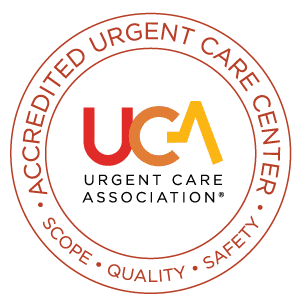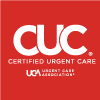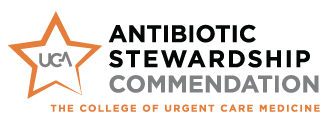Date Reviewed: January 1, 2023
Subject: Antibiotic Stewardship Best Practices
Patient Population: Adults and children
Rationale
Antibiotic stewardship is necessary and important to reduce antimicrobial resistance rates, minimize potential side effects and improve patient outcomes. The focus is to measure and promote appropriate use of antibiotics by clinicians.
It is critical to treat infections effectively, adequately, and in a timely manner.
Introduction
Antibiotic resistance is one of the greatest public health challenges of all times. More than 2.8 million antibiotic resistant infections occur in the U.S. each year and more than 35,000 people die of these infections. Additionally, Clostridioides difficile infections are associated with antibiotic use and represent 48,000 deaths yearly.
Moreover, antibiotic resistant infections that require the use of second- and third- line treatments can cause serious side effects, such as organ failure and prolong care and recovery.
Approximately 85%–95% of antibiotic prescription is attributed to the outpatient setting, and at least 30% of prescriptions are unnecessary.
Evidence based guideline with strength of evidence
Effective communication, making a commitment to prescribe antibiotics appropriately (selection of antibiotic based on diagnoses, dosage and duration) and using delayed antibiotic prescribing (watchful waiting) are evidence-based interventions.
Clinicians should carefully weigh the risks and benefits when prescribing these drugs.
Discussion
Antibiotic stewardship means protecting patients and the public from antibiotic resistance and adverse events by prescribing antibiotics judiciously (only when needed), in addition to prescribing the right drug, dosage and duration.
There is a link between antibiotic use during childhood and increased risks of autoimmune diseases and obesity (likely mediated via disruptions in the microbiome).
Major drivers for inappropriate/overprescribing antibiotics are pressure from patients, customer satisfaction and misdiagnoses.
Strategies to assist clinicians with antibiotic stewardship:
- Watchful waiting approach and delayed prescriptions can be used for non- severe infections that may require antibiotics if symptoms are not improving or worsening within a certain timeframe. Another alternative is close follow up and advise the patient to return for an antibiotic prescription if the condition is not improving (contingency plan).
- Patient education and effective communication is paramount when assessing the need of antibiotic treatment.
- Educational resources should be provided to patients emphasizing the appropriate use of antibiotics and the risk of unnecessary use. Explain risks and benefits (harms can exceed benefits).
- Use positive statements when offering symptomatic treatment.
- Choose your words carefully when describing the patient’s clinical condition, as it may impact on a patient’s understanding, perception, and satisfaction. Practicing with difficult scenarios will increase your comfort level regarding how to address patient expectations by practicing with difficult scenarios.
- Appropriate use of antibiotics can be achieved by leveraging clinical decision support applications and utilizing standardized order sets.
- Use point-of-care applications and consult clinical guidelines.
- Clinicians must remain current with best practices, national clinical guidelines, etc.
- Use of POC testing in our facility
- Follow local antibiograms when antibiotic prescription is necessary. Antibiograms assess the local susceptibility and resistance of pathogens.
Summary
Everyone has a role to play in improving antibiotic use. Appropriate antibiotic use helps fight antibiotic resistance and ensures these lifesaving drugs will be available for future generations.
Evidence-based tools can help clinicians during the decision making of antibiotic prescription and to leverage antibiotic stewardship. The goal is not simply to avoid antibiotics but to use them in a judicious manner. Clinicians should carefully weigh the risks and benefits when prescribing these drugs
References
- Antibiotic resistance questions and answers. Centers for Disease Control and Prevention. https://www.cdc.gov/antibiotic-use/antibiotic-resistance.html. Published August 23, 2021. Accessed December 20, 2022.
- About antibiotic resistance. Centers for Disease Control and Prevention. https://www.cdc.gov/drugresistance/about.html. Published December 13, 2021. Accessed December 20, 2022.
- Fleming-Dutra KE, Mangione-Smith R, Hicks LA. How to prescribe fewer unnecessary antibiotics: Talking points that work with patients and their families. American Family Physician. https://www.aafp.org/afp/2016/0801/p200.html. Published August 1, 2016. Accessed December 20, 2022.
- Wattles BA, Vidwan NK, Smith MJ. Antibiotic stewardship throughout the primary care visit: Opportunities for office staff. Family Practice Management. https://www.aafp.org/fpm/2021/1100/p10.html. Published December 1, 2021. December 20, 2022.
Important links
- https://www.cdc.gov/antibiotic-use/antibiotic-resistance.html
- https://www.aafp.org/fpm/2021/1100/p15.html
- https://www.cdc.gov/drugresistance/about.html
- https://www.cdc.gov/antibiotic-use/core-elements/outpatient.html
- https://www.aafp.org/afp/2016/0801/p200.html
- https://www.aafp.org/fpm/2021/1100/p10.html
- https://aspe.hhs.gov/sites/default/files/documents/d5d01eb69710588247eb2aef3a46c118/HHS_ASPE_CARB_Report_Year5.pdf
- https://academic.oup.com/ofid/article/7/Supplement_1/S9/6057513




